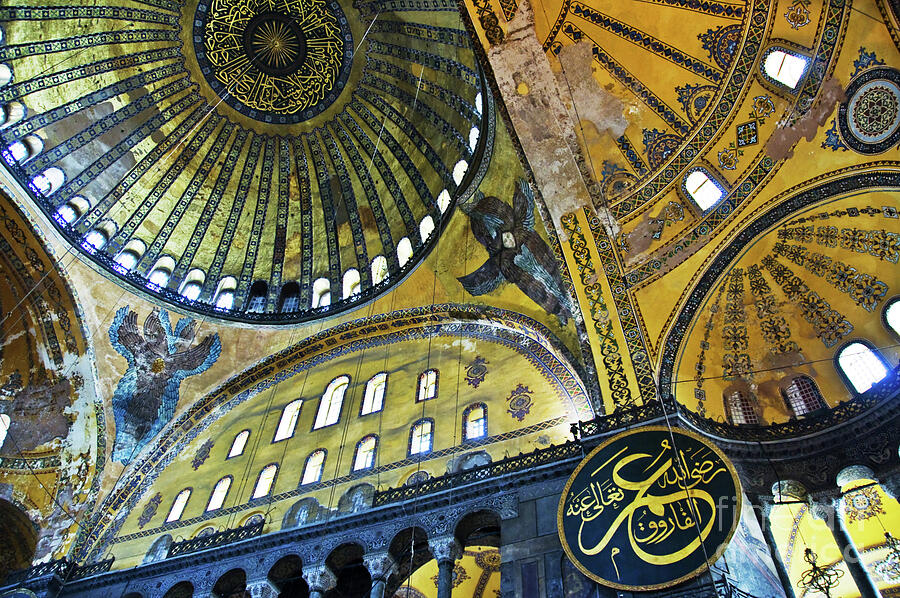Since I was there in April, I can address this.
Yes, there are rugs on the floor of the Hagia Sophia, as required in a mosque. And, yes, the most overtly Christian of the mosaics in the central area are covered, as they would be inappropriate for a Muslim house of worship. However, they are not permanently covered, as in, plastered over. There are large hanging calligraphic displays blocking the worshipers’ view of the mosaics, but the artworks are still there. If you can get yourself in the right place in the galleries, you can just peer around the edges and see glimpses.
To illustrate, note the dark circle at lower right. That’s suspended on cables, and is about a meter in front of the wall, hiding the mosaics behind.

However, observe the painted ceiling has not been covered in any way; the Byzantine-era representations of angels and such are still exposed (see the totemic-looking figures just below the main dome). There would be no representational art like this in a proper mosque, but evidently there was extensive discussion and it was decided that these would be acceptable.
In addition, the surviving mosaics in the upstairs galleries have not been covered at all. This, again, was apparently deemed acceptable, because they’re not visible from the central area of worship.
Also, it’s noteworthy that the building itself is oriented on the compass as a Christian church, and doesn’t properly face Mecca like a mosque should. To compensate, a mihrab has been added — this is the niche or altar which indicates the direction to Mecca. In a purpose-built mosque, this would be in the center of the front interior wall. Here, though, it’s visibly off-center with respect to the building, placed so the worshipers can kneel and pray in the correct direction.

It’s an astonishing building. I strongly recommend visitors spend time reading about it and familiarizing themselves with the details so they know what they’re looking at before they go, in order to get the most out of it. It’s impressive no matter what, but it’s doubly impressive when you understand the incredible history and evolution of the place, and in some ways genuinely inspiring to recognize how Islam and Christianity manage to co-exist within its walls.

